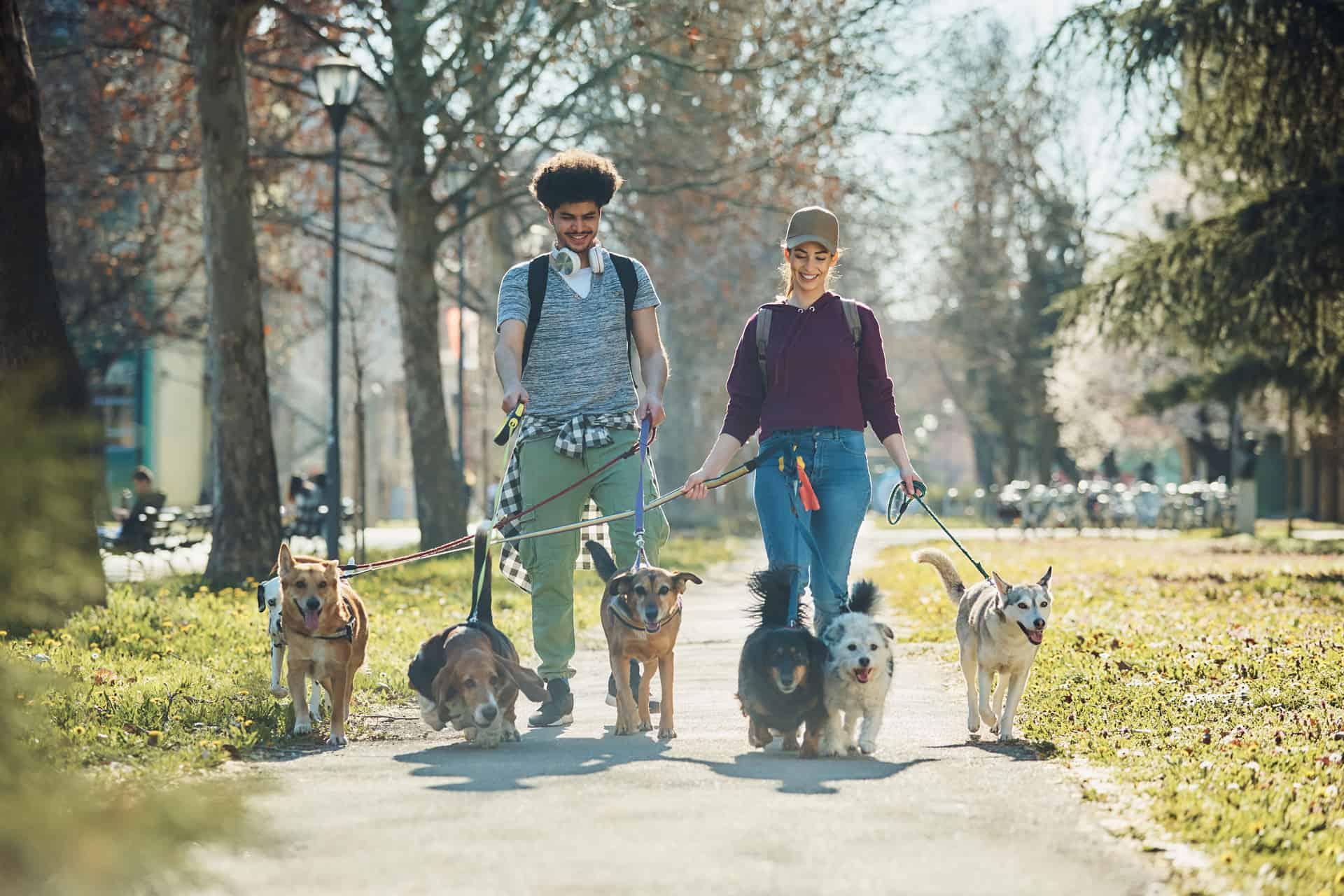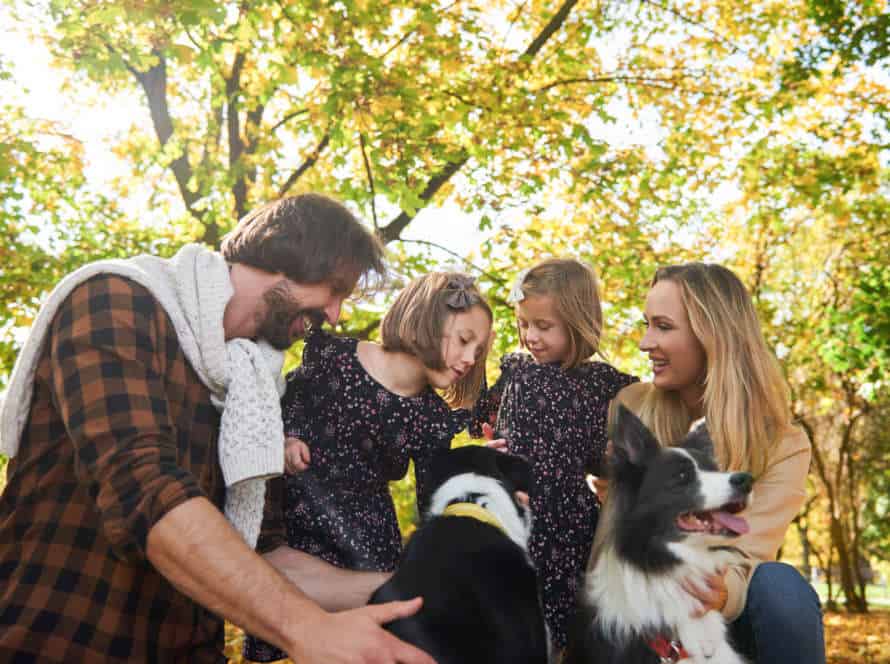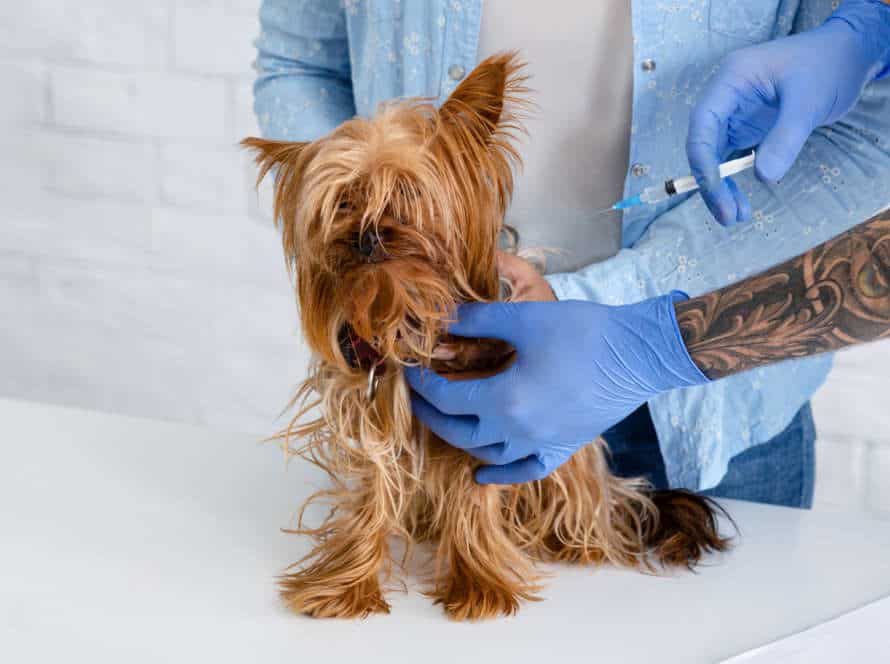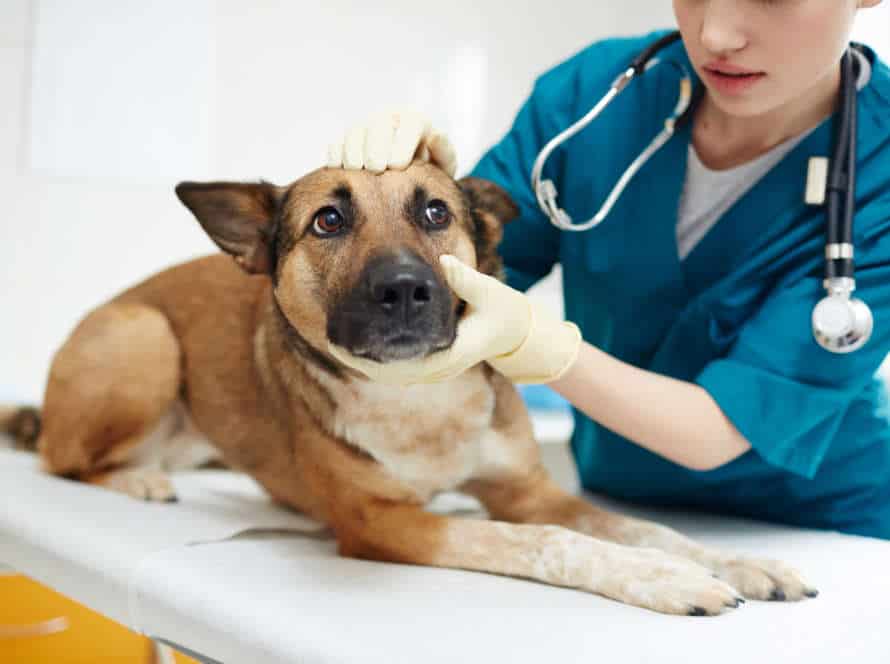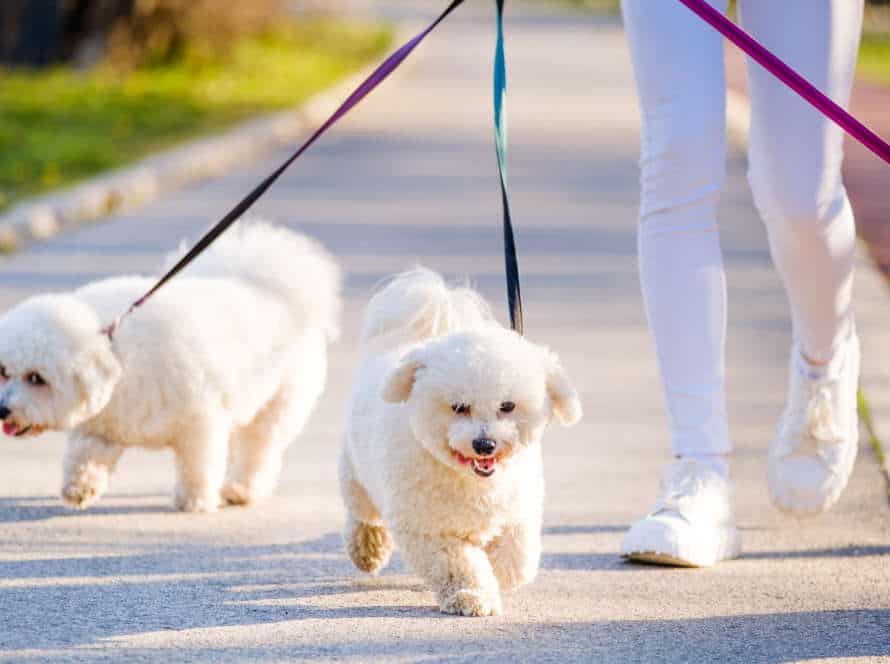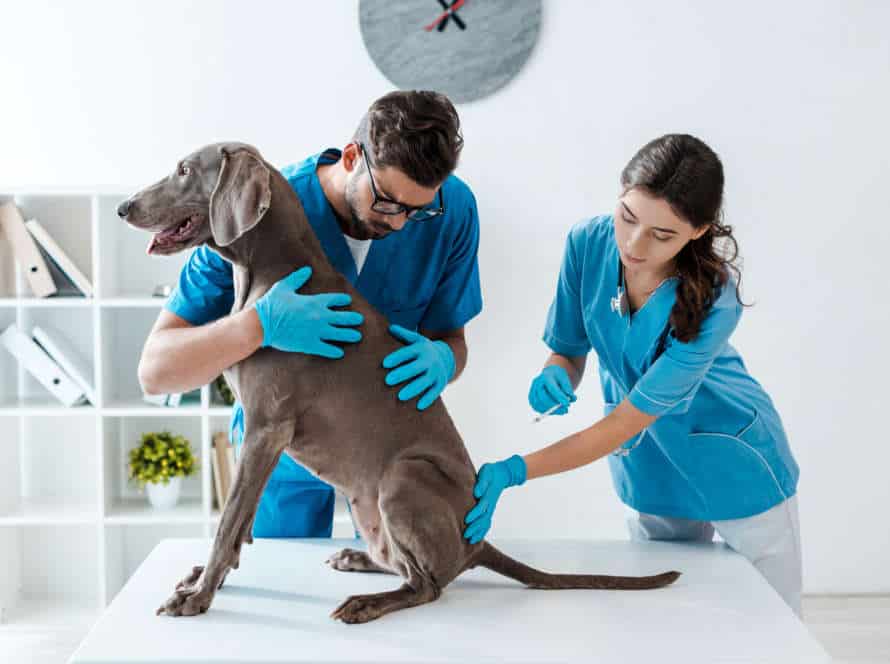Understanding Shyness in Dogs
Dogs can show shyness in different ways. From not looking at people, to running away from strange noises and people. Knowing the cause of their shyness is essential before training them to be more confident. We will now analyze the possible reasons for shyness and the different tools/methods that can help boost their confidence.
Causes of shyness in dogs
Shyness in dogs can have many causes. The most common ones are genetics, lack of socialization, trauma, and health issues.
For example, some herding breeds are sensitive to sudden sounds or movements. Also, dogs that have not been exposed to different environments, people, and other animals may be scared in new situations.
Past abuse or neglect can result in anxious behavior. Also, dogs in chronic pain, illness, or discomfort may show shyness.
If you have a shy dog, you can help them. Training, positive reinforcement, and socialization exercises can help your pup become more confident. A professional dog trainer can help design a customized plan for your pup.
Signs of shyness in dogs
Shyness in dogs can present in many ways. You need to be aware of the signs to help your pup become more confident. Here are some signs of shyness in dogs:
- Trembling or shaking
- Tucking its tail
- Not making eye contact
- Cowering or backing away
- Hiding behind furniture or objects
- Refusing food/drinks when people are around
- Reacting with fear to loud noises, quick movements, or new surroundings.
If you spot any of these signs, it’s important to help your pup gain confidence with positive reinforcement, training, and socialization. Expose them to new experiences and people gradually. This will help them trust and interact with their environment. Pro Tip: Patience, consistency, and praising your shy dog is the key to a strong bond.
Consequences of untreated shyness
Untreated shyness in dogs can cause huge impacts on their health and happiness. It can lead to anxiety, stress and fear in social situations. This can then create additional behavioral issues and hinder their ability to build a close bond with their owner.
Here are some of the consequences of untreated shyness in dogs:
- Aggression: When strangers or unfamiliar dogs come near, shy dogs may act aggressively.
- Separation Anxiety: Shy dogs may become very attached to their owner, leading to difficulty when left alone.
- Poor Socialization: Shyness makes it tough for them to interact with people and other dogs in a good way.
Pro Tip: Positive-reinforcement training and socialization classes can help shy dogs gain confidence and beat their shyness.
Building Confidence through Training
Training timid pups can be a challenge, yet with patience and commitment, it’s possible. Teaching your shy pup can help strengthen their poise and make them more at ease in the outside world.
Here, we’ll look at how you can use training to help your bashful pup boost their confidence and become a more assured pooch!
Positive reinforcement training
Positive reinforcement training is a great way to assist timid pups in getting more confident and conquering their worries. Here’s how to make use of positive reinforcement to train and build assurance in shy dogs:
- Praise them, give treats, or play to reward good behavior, reinforcing positive conduct and building self-assurance.
- Begin with small steps, avoiding overwhelming the pup, and gradually increase the complexity of each job.
- Use a peaceful and supportive tone of voice to make your pup feel secure and protected all through training sessions.
- Be patient, consistent and persistent in your training attempts to aid your pup in overcoming their fears and become more confident.
Positive reinforcement training can give your shy dog the capability and certainty they need for growth and success.
Counter-conditioning and desensitization
Counter-conditioning and desensitization are useful techniques to help shy dogs gain confidence.
Counter-conditioning involves teaching the dog to link something they find anxious or fearful with something positive, such as treats or praise.
Desensitization is a process of gradually introducing the dog to the trigger. Starting with a low intensity version and increasing it up until the full version.
For example, if the dog is scared of loud noises, you can play a quiet recording of thunder or fireworks while giving them treats or praise. Increase the volume over time until the dog can tolerate the real thing.
With patience and consistency, these methods can help a shy dog become more confident.
Pro tip – Consistency and patience are important when using counter-conditioning and desensitization with your dog. Reward them for progress, no matter how small.
Confidence-building exercises
Confidence-building exercises are a great way to help shy dogs become more confident. Here are some tips:
- Teach them to target your hand or an object. Increase the difficulty level as they learn.
- Get them to step onto a raised platform or balance beam. Increase these as they get better.
- Use a clicker to signal when they succeed. Reward them with a treat or praise.
- Gradually expose them to things that make them anxious. Start at low intensity and increase it over time.
By doing these exercises regularly, your shy dog can gain confidence. They will be more comfortable in social situations.
Socialization with people and other dogs
Socializing a shy pup is vital for building trust. This includes letting them meet people and other canines in a secure and positive atmosphere. Here are some hints to help your timid pooch build confidence through socialization:
- Start off easy, with brief, upbeat meetings between your pup and other people or dogs.
- Gradually increase the length and strength of the meetings as they become more at ease.
- Reward your pup for good behavior and give lots of appreciation and encouragement.
- Use clicker training and other positive reinforcement techniques to bolster their confidence and support favorable actions.
- Be patient and constant with your approach, as gaining trust in a shy pup takes patience and effort.
- Pro tip: If you’re having trouble socializing your shy pup, think about recruiting a professional dog trainer who specializes in timid or scared dogs.
Working with a Professional Trainer
A professional trainer is great for shy pooches. They’ll create a positive atmosphere to help your pup conquer their worries. Plus, the trainer can tailor the training to your pup’s needs and help them make the most progress. It’s the perfect way to help your dog build confidence!
How trainers can help shy dogs
Expert dog trainers are a useful asset to have when helping timid doggos gain more self-assurance and get over anxiety. Here are some ways a trainer can aid you in training your shy pup:
- Comprehending your pup’s requirements: A professional trainer can evaluate your pup’s behavior and help you create plans to meet their distinct needs.
- Spotting triggers: A trainer can recognize what makes your pup tense and assist you in desensitizing them to those circumstances.
- Positive reinforcement: Utilizing reward-based training, a trainer can make your pup feel more secure and less anxious, inspiring them to take part in new situations.
- Socialization: Socialization is the best way to aid your pup to become less timid. Trainers can teach you how to properly introduce your pup to other dogs and humans in a secure and regulated atmosphere.
With time, patience, and an experienced trainer, shy dogs can learn to be more sure of themselves and be at ease with the world.
Choosing the right trainer for your shy dog
Owners of shy dogs need to find the right trainer to help their pets overcome anxiety and build confidence. Here’s how:
- Look for a trainer with experience in shy dogs. They will know techniques to help gain confidence.
- Get referrals from other owners of shy dogs. This can help you find a trainer with success in helping shy dogs.
- Watch training classes before committing. This will show how the trainer interacts with dogs, teaches commands & behaviors.
- Look for a trainer who uses positive reinforcement. This is the best way to help shy dogs build confidence.
By following these guidelines, you can find a trainer devoted to helping your shy dog be more confident and social.
Step-by-step training process with a professional trainer
Getting a pro dog trainer can help timid pups become more self-assured thru education. Here’s a step-by-step guide:
- Begin with basic obedience instruction: Show your doggy simple commands such as “Sit,” “Stay,” and “Come” in a distraction-free area. This allows your pup to be more relaxed and confident around you.
- Step-by-step increase the difficulty: As your dog develops trust, step-by-step raise the challenge of the exercise by adding more disturbances, like people or other dogs.
- Use positive reinforcement: Give treats and positive reinforcement to reward good conduct and build your pup’s assurance. This helps your pup link education with positive encounters.
- Little by little introduce your pup to social conditions: Introduce your pup to new people and social conditions bit by bit, with plenty of positive reinforcement and rewards for good behavior.
- Be patient and stable: Building assurance in a shy doggy takes time and patience. Steady teaching and positive reinforcement can work miracles over time. Pro tip: All the time be relaxed and patient with your pup during training classes, and observe even small successes along the way.
Maintaining Confidence in Shy Dogs
Training shy pups takes extra effort. But with a structured and consistent program, they can become more confident and better at socializing. Patience and dedication are essential when working with them, as they may need plenty of breaks and encouragement to build trust. With the right training, a shy pup can conquer their fears and be the best they can be!
Consistent reinforcement of training
Reinforcing training is essential for helping shy pups gain and maintain confidence. If you have one, here are some tips:
- Keep sessions short and frequent. Work with them for 10-15 minutes multiple times a day.
- Use positive reinforcement. Praise and treat them when they follow instructions.
- Remain calm and patient. Shy dogs can be easily overwhelmed.
- Gradually increase difficulty level. Once they know the basics, step it up.
- Be consistent. Use the same commands, rewards, and tone of voice each time.
Consistent reinforcement will help them build confidence and feel secure.
Recognizing and addressing setbacks
Shy dogs may experience hindrances in their training and socialization. This can cause their confidence to dwindle. It’s important to recognize and address these issues quickly to guarantee that your pup continues to develop self-assurance and make progress.
Some common setbacks shy dogs may confront are:
- fear-based behavior
- reluctance to interact with people or other dogs
- regression in training
These can usually be tackled by going back to basic training, increasing positive reinforcement, and giving a secure and solid environment for your pet.
To help your bashful dog stay confident, reward them for good behavior, stay patient, and be consistent in your training sessions. Also, provide plenty of chances for socialization and exposure to new experiences in a monitored and safe environment.
Remember, constructing courage in shy dogs needs time, effort, and dedication, but the rewards are worth it.
Taking steps to prevent future shyness issues
For a shy pup, having confidence is major for its wellbeing. You can help build its self-assurance with training by doing these:
- Socialize it. Introduce new folk, places, and experiences in a controlled and positive environment.
- Reward its good behaviour. Treats, praise, and play for desirable behaviour.
- Exercise regularly. Fetch, walks, and other activities reduce stress and anxiety in shy dogs.
- Get training. Obedience classes or a pro trainer to teach basic commands and proper behaviour.
- Be patient. Building confidence takes time. Celebrate each of its small successes.
Pro Tip: Anxiety vests and pheromone sprays can help soothe a shy dog during training or tough times.
Conclusion: Helping your Shy Dog Thrive
Working with a shy pup can be VERY rewarding! This connection you can have with your pet is unique – you wouldn’t get this with a more confident dog. Be patient and understanding; train them. Help your shy pup to gain confidence and feel comfy in the world. Here are tips and techniques to help them grow and be happy:
- Be gentle and patient with them.
- Train them – this will help build their confidence and give them a sense of purpose.
- Socialize them gradually, but be mindful not to push them too far out of their comfort zone.
- Use positive reinforcement to encourage them when they make progress.
- Provide a safe space for your shy pup where they can relax and feel more comfortable.
Recap of key points
In the end, having confidence in a shy doggy needs patience, consistency, and an organized strategy. Here are the most important things to keep in mind:
- Recognize your pup’s behavior and how much they can handle, to stop them from being too overwhelmed.
- Use positive reinforcement and reward them for doing good.
- Start off with basic commands. Once they’re confident, increase the difficulty.
- Desensitize them to new situations slowly.
- Train with regularity, make it fun, and don’t let the session go on for too long.
If you use these tips, you can help your timid pup become more confident and social. A bonus tip: Be patient and celebrate the small successes to motivate them.
Encouragement to take action to help your dog
Assisting timid pooches to construct assurance through training is an amazing method to help them defeat their fears and live joyfully and satisfying lives. Here are a few hints to begin:
- Begin with straightforward orders like “sit” and “stay,” and step by step proceed onward to more confused errands.
- Adhere to an unfaltering schedule, so your pup knows what’s in store and can feel increasingly secure.
- Utilize positive support strategies, for example, treats and compliments, to inspire your dog and help him feel increasingly sure.
- Gradually present your pup to new and testing circumstances, consistently keeping a nearby eye on his non-verbal communication and conduct.
Remember, helping your bashful dog flourish takes time, tolerance, and determination. With the correct training and support, your pup can figure out how to defeat his fears and turn into a sure and upbeat buddy.
Final thoughts and resources for further support.
To assist a shy dog, use the correct approaches and training. Start by knowing your pup’s character and requirements. Then create a positive plan for training that involves positive reinforcement, socialization, and desensitization to raise confidence and reduce anxiety.
At home, supply a safe and secure atmosphere and integrate exercise, play and interesting activities. These will help shy dogs blossom.
For extra aid, there are lots of resources, such as local dog trainers, behaviorists, and online discussion boards and communities dedicated to helping pet owners with timid dogs.
By being patient, steady and caring, you can assist your shy dog not just survive but also grow into a happy and confident companion.
Pro Tip: Don’t be frustrated if you don’t see instant results, forming confidence in a shy dog can take time, but it’s worth it. Stay dedicated, be kind, and consistent in your training and you’ll get great outcomes.
Frequently Asked Questions
1. How can training help my shy dog build confidence?
Training can help your shy dog build confidence by providing structure and consistency in their daily routine. It also helps your dog learn new skills and tricks, which can boost their self-esteem and give them a sense of accomplishment.
2. What are some training techniques that can help my shy dog?
Some training techniques that can help your shy dog include positive reinforcement, desensitization, and counter-conditioning. These techniques can help your dog learn to trust their environment and feel more comfortable in new situations.
3. Can I train my shy dog myself, or do I need to hire a professional trainer?
You can certainly train your shy dog yourself, but it’s important to understand your dog’s unique temperament and needs. A professional trainer can offer personalized guidance and support to help you and your dog achieve your training goals.
4. Is it possible to over-train my shy dog?
Yes, it is possible to over-train your shy dog. Like humans, dogs can experience burnout and become overwhelmed if they are trained too often or for too long. It’s important to give your dog rest breaks and pay attention to their body language to avoid over-training.
5. How long does it take for a shy dog to become confident?
The length of time it takes for a shy dog to become confident varies depending on the dog’s individual circumstances and temperament. Consistent training over a period of months or years can help your shy dog build their confidence and learn to trust their environment.
6. Can training help my shy dog overcome their fear of other dogs?
Yes, training can help your shy dog overcome their fear of other dogs. Desensitization and counter-conditioning techniques can help your dog learn to feel more comfortable around other dogs, and positive reinforcement can help them form positive associations with other dogs.

